Thing 1 – Echolocation
“Bats do it. Shrews do it. Dolphins, porpoises and whales do it.
Let’s do it. Let’s echolocate.”
Since the coining of the word in 1944 by American zoologist Donald Griffin, echolocation has been a subject of increasingly sophisticated research, as well as a source of fascination. The first experiments, by Lazzaro Spallanzani 150 years earlier, had established (using methods that would rightly elicit howls of protest nowadays) that the flight capabilities of bats were unaffected by blindness but compromised by the removal of their hearing. He didn’t know why this happened, and his ideas were widely dismissed by, among others, the influential Georges Cuvier.
Most people are probably aware of the existence of echolocation in bats and other mammals, even if they might be fuzzy on the details (good brief explainer here, another one with fantastic footage here,and another one exploring the evolutionary arms race between moths and bats here). It might come as a surprise, though, to learn that some birds (oilbirds and swiftlets) use a relatively rudimentary form of echolocation, and even more of a surprise to learn of its existence in humans.
“Doors aren’t open to blind kids in this society – in almost any society. The doors are shut, barred, locked. You have to kick down that door, because we’ve spent millennia being kept in the dark.”
This is a short film about Daniel Kish, an altogether remarkable man.
Take 17 minutes out of your day to watch it – I think you’ll find it worthwhile.
And here’s a short article about the making of the film.
“Usually if they say ‘you shouldn’t do that’, I say ‘screw you, I don’t care, because there’s no way to stop me.”
Thing 2 – Raindrops
This is fun. It’s called River Runner. Click anywhere in the world to drop a raindrop and then watch it make its way to the sea. I chose Mount Everest because of course I did, but also the other natural place to choose is your own home and I’m not that keen to share those details on the internet.
Thing 3 – Cards
These playing cards, produced in 1964 in celebration of the American space programme, offer a fascinating glimpse into the past.
via Kottke.org
Thing 4 – Emojerwocky
The representation of book and film titles in emoji has been a thing for a while, so this isn’t exactly cutting edge stuff. But I was tempted, in an idle moment the other day, by this emoji translator.
What, I wondered, would it make of the first line of Lewis Carroll’s famous nonsense poem Jabberwocky?
“twas brillig and the slithy toves did gyre and gimble in the wabe”
This is what it came up with. A suitably mystical and nonsensical emoji sentence, I’m sure you’ll agree.
🌙 💫 🔴 🐍 🕸️ 🐙 🎢 🔄 🌊 🏞️
Then it occurred to me to wonder what would happen if I asked it to translate that back into English. It was either a worthwhile exercise or a complete waste of 90 seconds. You decide.
“Under the light of the full moon (🌙), a mysterious red energy (💫🔴) began to pulsate in the heart of the forest. The source of this energy was a massive snake (🐍) coiled around an enormous spider web (🕸️), with a giant octopus (🐙) trapped in its center.
The snake's scales shimmered with a hypnotic pattern, and the web seemed to hum with a life of its own. Suddenly, the entire scene began to spin (🎢🔄), and the water from a nearby river (🌊) began to rise and flood the surrounding area (🏞️).
As the water level rose, the octopus managed to free itself from the web, but the snake was not so lucky. The water swept the snake away, and the web began to unravel. The red energy that had been pulsating from the snake's body began to dissipate, and the forest returned to its peaceful state.
The octopus, now free, swam away, leaving the forest to heal and recover from the strange events that had occurred. The full moon continued to shine down, casting a silver glow over the now calm and still forest.”
Buoyed by my success, and hoping to assuage the desires of the completists among you, I gave it the whole poem. The translator set to its task with vim and gusto, assuring me that in a mere 5.1 seconds it would present me with the fruits of its labours. The deadline came and went. As the seconds ticked by, I wondered if the machine might be regretting its former breezy confidence. Eventually, after an interminable 37 seconds, it gave me this, which very much gives me the impression that it displayed an entirely human capacity for starting a major task with the best of intentions before abandoning it shortly afterwards with an irritable “oh sod it that’ll do”.
🌙🌪️🦎🕸️🌳🤪🌀🔄🕰️💨🦐🌳🐛🐌🌪️🌀🍃🌳😱😨🍂🐦🐦🐍🌳😈👹🐦🐦🦎🦎🏃️🏃️💂️🗡️🤲🕒🕒🕒🕒🕒🕒🕒🕒🕒🕒🌳🧘️🌳🌲🌲🌲🌲🌲🌲🌲🌲🌲🌲🌲🌲🌲🌲🌲🌲🌲🌲🌲🌲🌲🌲🌲🌲🌲🌲🌲🌲🌲🌲🌲🌲🌲🌲🌲🌲🌲🌲🌲🌲🌲🌲🌲🌲🌲🌲🌲🌲🌲🌲🌲🌲🌲🌲🌲🌲🌲🌲🌲🌲🌲🌲🌲🌲🌲🌲🌲🌲🌲🌲🌲🌲🌲🌲🌲🌲🌲🌲🌲🌲🌲🌲🌲🌲🌲🌲🌲🌲🌲🌲🌲🌲🌲🌲🌲🌲🌲🌲🌲🌲🌲🌲🌲🌲🌲🌲🌲🌲🌲🌲🌲🌲🌲🌲🌲🌲🌲🌲🌲🌲🌲🌲🌲🌲🌲🌲🌲🌲🌲🌲🌲🌲🌲🌲🌲🌲🌲🌲🌲🌲🌲🌲🌲🌲🌲🌲🌲🌲🌲🌲🌲🌲🌲🌲🌲🌲🌲🌲🌲🌲🌲🌲🌲🌲🌲🌲🌲🌲🌲🌲🌲🌲🌲🌲🌲🌲🌲🌲🌲🌲🌲🌲🌲🌲🌲🌲🌲🌲🌲🌲🌲🌲🌲🌲🌲🌲🌲
Thing 5 – Bears
We like bears. Winnie-the-Pooh, Paddington, Blubber (watch all the Wacky Races episodes here), Yogi (watch all the Yogi Bear episodes here) Baloo (see below for sobs) and many more.
But the popularity and cuddliness of fictional bears might lead the unwary into actions they might come to regret. A few days ago I came across a GOTI (Guy On The Internet) who was, in apparent earnestness, urging people that yes it was absolutely fine to approach bears, to engage them in conversation and to feed them. When it was pointed out that this was a) bollocks and b) really really dangerous, he doubled down with a lot of “oh but why don’t you respect the beauty of these majestic creatures”, which of course yes, but also perhaps respect them by STAYING THE HELL AWAY FROM THEM. I shan’t link to it because honestly it’s not worth dignifying with clicks, but I’m sure you get the idea.
Thanks. I feel better having got that off my chest.
ANYWAY.
Close encounters with bears haven’t been a thing in the UK for a thousand years or so, although if you head to the Bristol area you can catch a glimpse of them in a controlled, not-totally-zoolike environment.
In other parts of the world, though, you have to be a bit more careful. Perhaps the most famous venue for bear-spotters is Yellowstone Park, where you’re not allowed within 100 yards of them and feeding is absolute no-no.
Fascinating, then, to see these archive photographs from the 1950s and 1960s. Autres temps, autres moeurs.
Thing 6 – Metaphor Dogs
This website, which “explores the ways in which references to dogs are used in vernacular English”, will please anyone who likes dogs or language.
If you like both, well, you’ll be wriggling like a puppy.

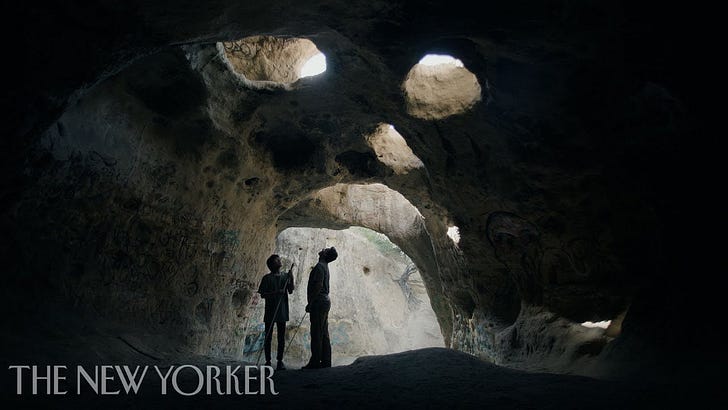

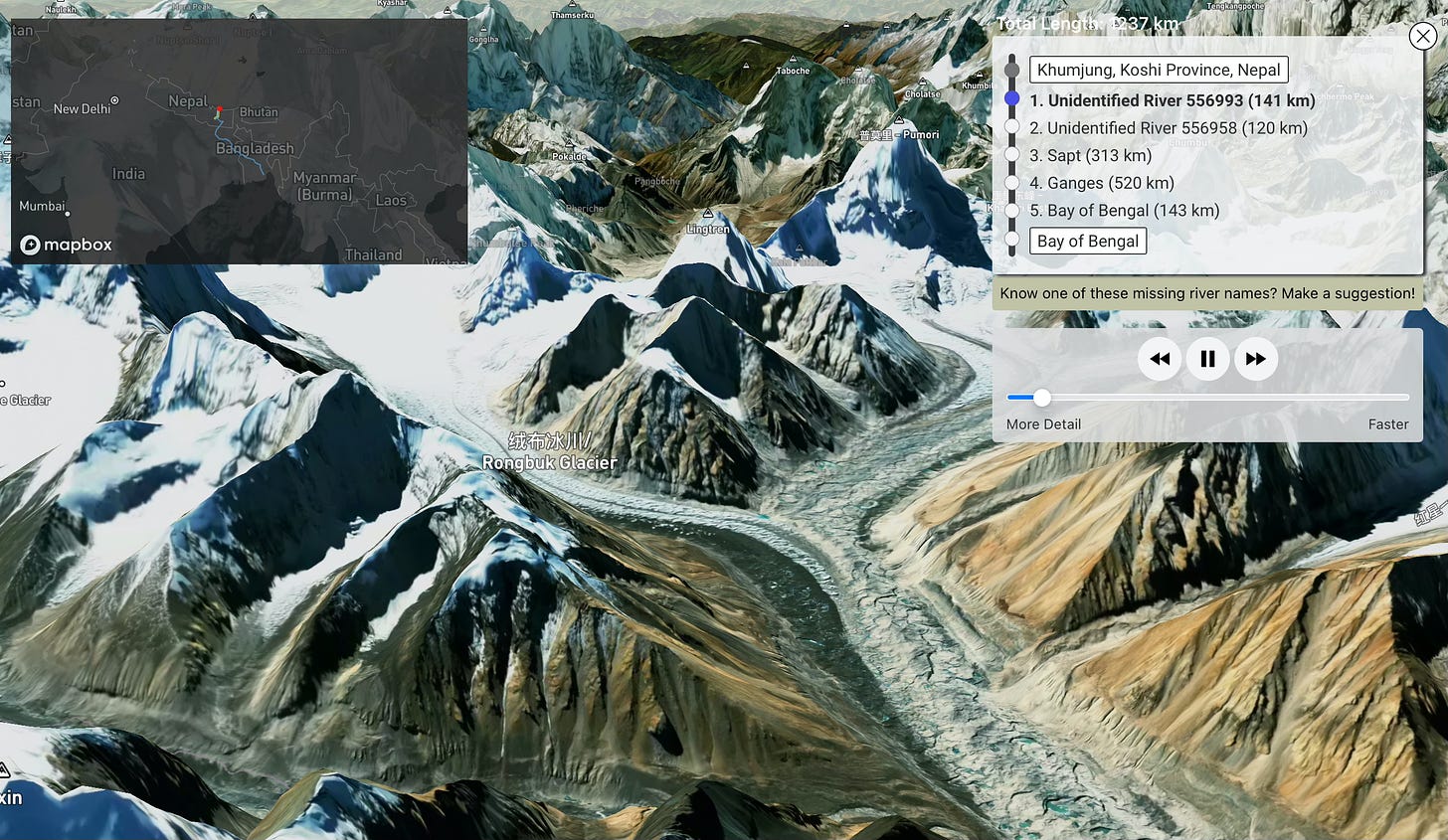
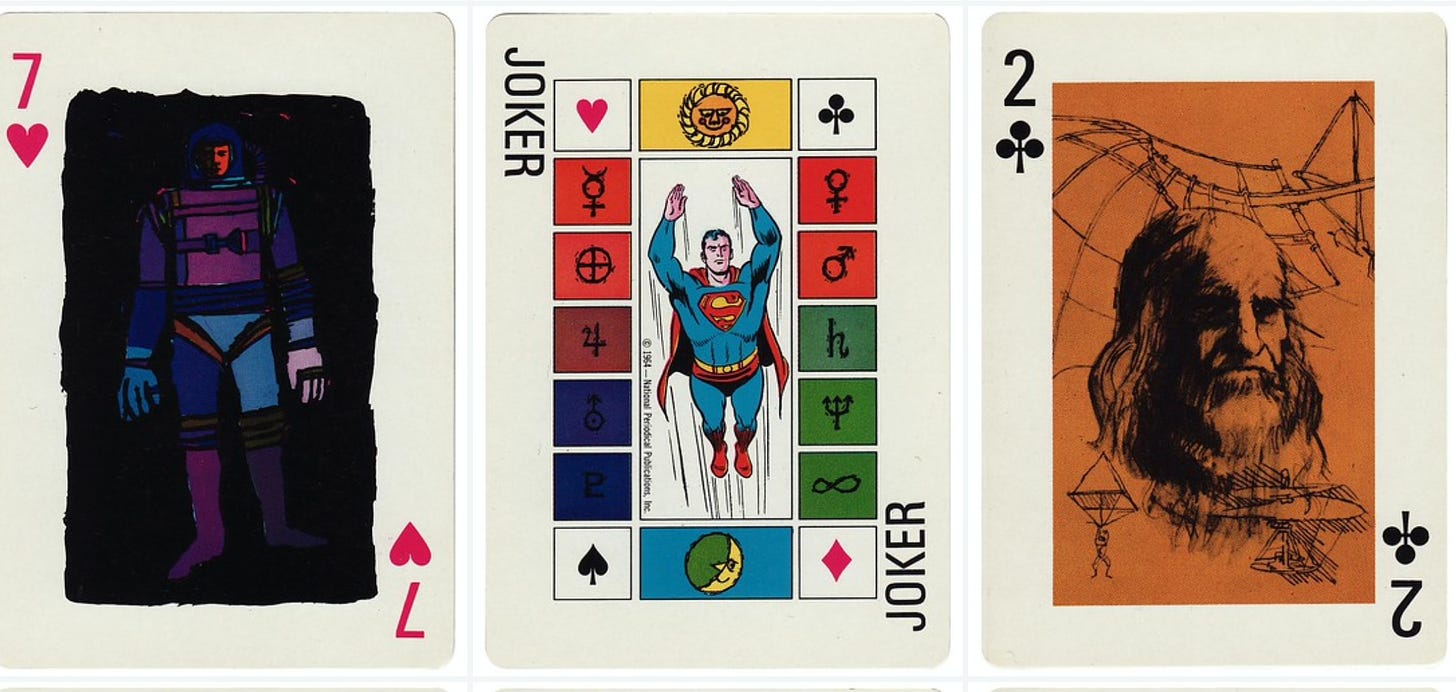
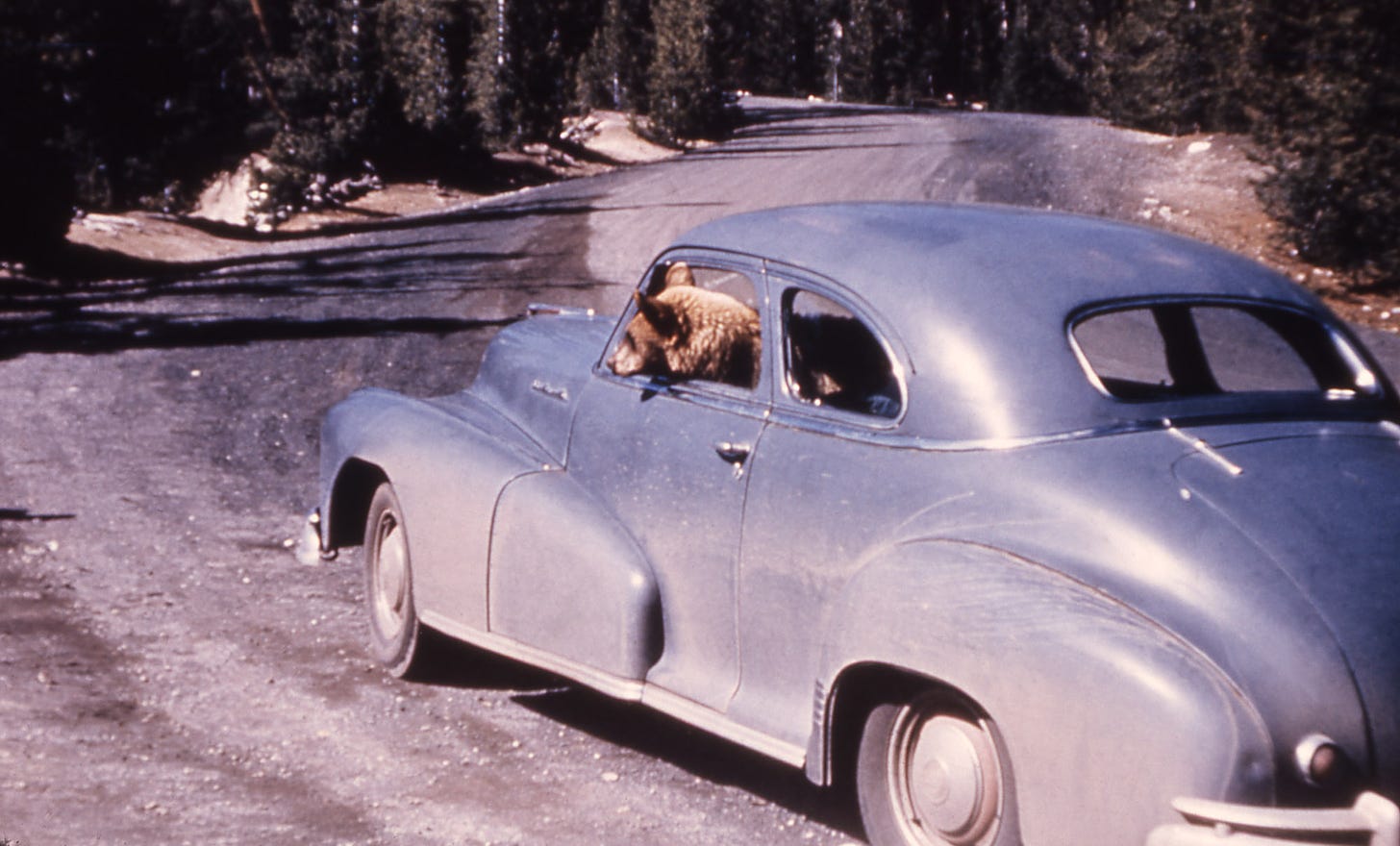
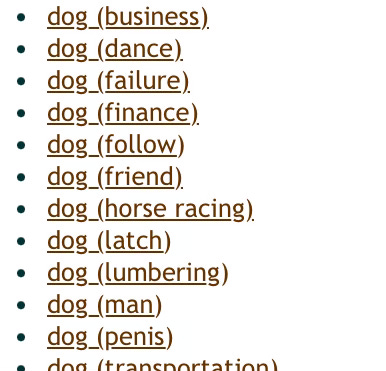
What a Six! Especially the jabberwock result 😂
A wonderful collection - as always, utterly fascinating and very funny. The bamboozling/meltdown of the reverse translator made me properly chuckle... 🌲🌲🌲🌲 🤣